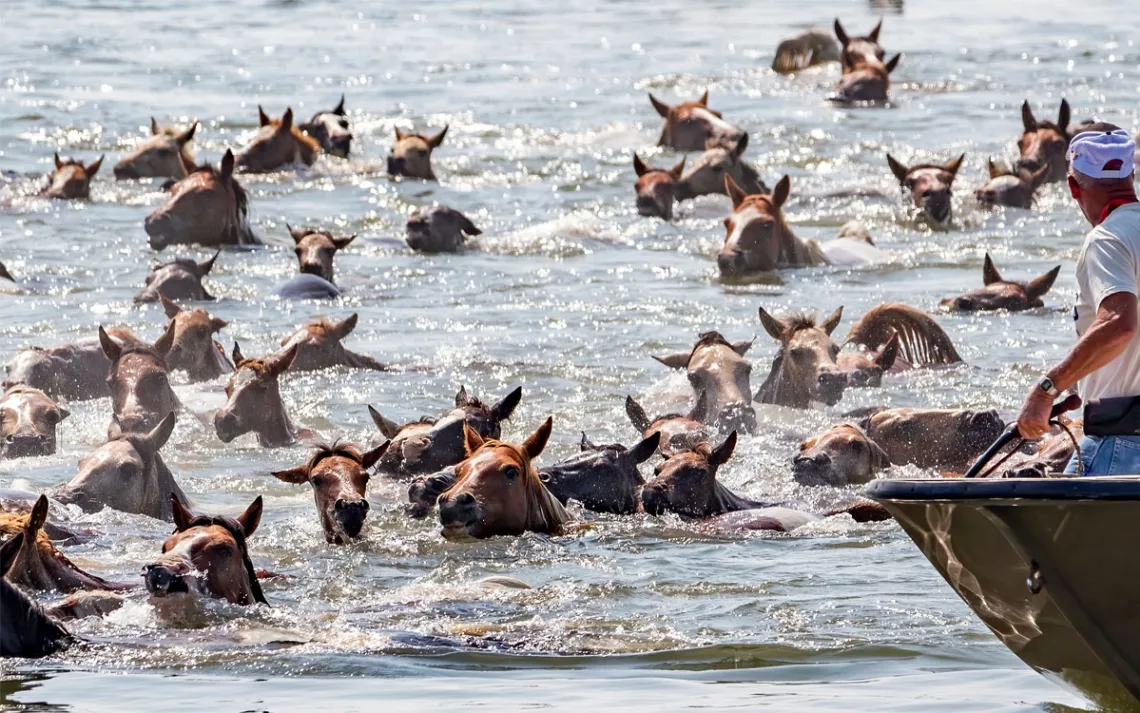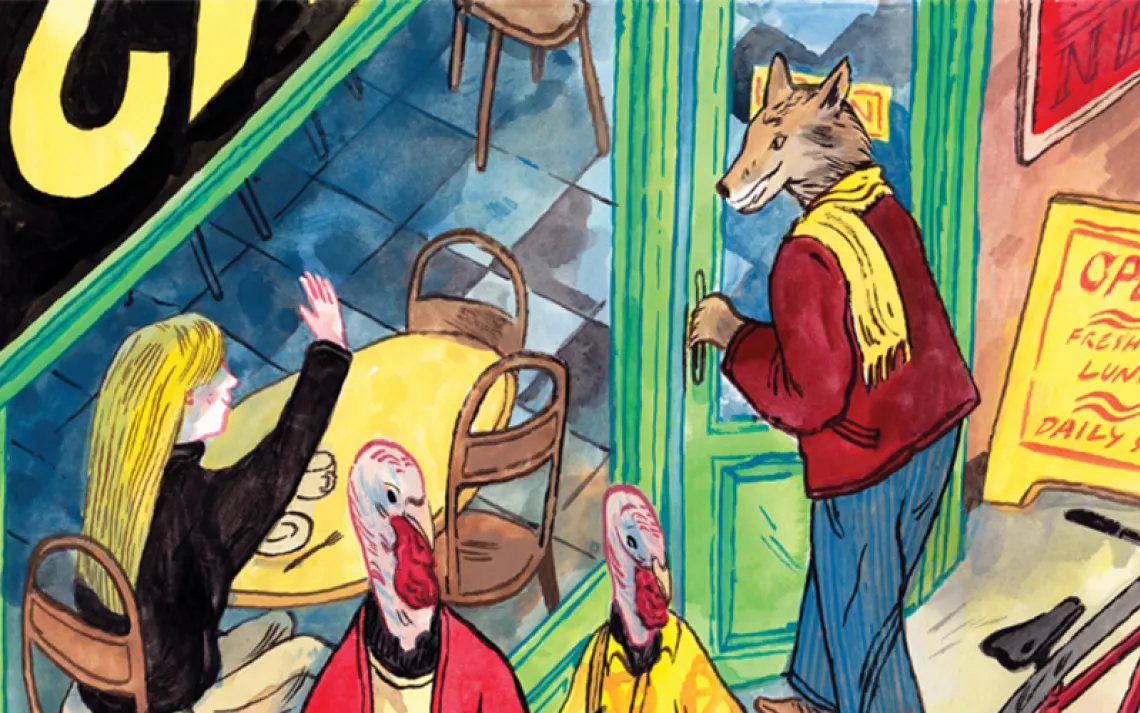A Visit to the Annual Chincoteague Island Pony Swim
These feral horses may seem wild—but look again

Photo by Jill Jasuta
The Saltwater Cowboys cracked their whips, and the herd of feral ponies plunged into the water. The ponies quickly became a mass of swimming heads as they crossed the roughly 200 yards of open water between the island of Assateague and the island of Chincoteague. Boats guided the animals on their way as the cowboys, all local volunteer firefighters, yelled "Hey, hey, hey!" to keep them on course.
The 98th Chincoteague Island Pony Swim—an annual event in July made famous by Marguerite Henry's 1947 children's book, Misty of Chincoteague—had begun.
The roughly 150 ponies are one of two herds that live on Assateague, a 37-mile-long barrier island split between Maryland and Virginia. On the Maryland side, approximately 75 ponies roam the beaches and saltwater marshes of Assateague Island National Seashore and Assateague State Park. On the Virginia side, separated only by a fence at the state line, their cousins run through the Chincoteague National Wildlife Refuge. Though both herds are described as wild, they lead dramatically different lives.
So the ponies are left to roam wild—wildly close to people, if they so choose.
While a gorgeous strip of beach with dunes and marshes beyond might seem like paradise to many people, it's harsh terrain for a horse, with little fresh water and only salty, tough grasses for fodder. Over the centuries, the animals became small and stocky, downsizing from horses to ponies that average 13.2 hands in height. They have a round, barrel-like middle. "That's because they're drinking natural fresh water that's on the island, which has the tendency to be a little bit brackish," said Bill Hulslander, chief of natural resources management for the national seashore. "So they're consuming higher quantities of salt. They obviously retain water a little bit more, so they look kind of swollen."
Their biological adaptations made the ponies an evolutionary success—and eventually local cultural icons. When Assateague was divvied up in the 1960s into a mosaic of national and state parks, "the National Park Service recognized that they were of interest to visitors," Hulslander said. "So many people value having those horses in this park that the park decided early on that we were just going to manage and keep them and figure out a way to balance their impacts."
On the Maryland side, no one herds the horses, which routinely block the road, causing a pony pileup. The Virginia herd is owned by the Chincoteague Volunteer Fire Company, which has been rounding up the ponies for the swim since 1925. "We had a really big hurdle there, because normally an official wildlife refuge would not condone any kind of domesticated or feral animal," said Hunter Leonard, a Saltwater Cowboy who's also the public relations officer for the fire company. After the Chincoteague National Wildlife Refuge was established in 1943, federal officials considered removing the ponies. The fire company pushed back and claimed that the ponies had been resident long enough to be "just as much a piece of the island as anything else that lives here." The pleas worked, and the ponies in both states were declared a "desirable feral species."
Desirable or not, the ponies kept increasing in number, and overgrazing accordingly. A management plan was developed for the Maryland herd in the early 1980s, and for decades the mares received birth control delivered by dart.
In Virginia, the ponies are allowed to breed at will, and all excess foals are auctioned off. The animals are rounded up several times per year for veterinary checks and vaccines. The herd might be described as free-range rather than truly free.
The Maryland herd has been the subject of numerous scientific studies on wild horse genetics, but the animals themselves are rarely touched. "One of the goals of our management plan is to provide an opportunity for visitors to view horses in their natural environment, exhibiting natural social behavior," Hulslander said. So the ponies are left to roam wild—wildly close to people, if they so choose.
No fence separates the Maryland ponies from tourists, and close encounters are common. The ponies feed along the roads and in campgrounds. "They're pretty opportunistic feeders," said Angela Baldwin, the park manager for Assateague State Park. "If something's there and easy to get to, they will [get to it]." That includes the food on people's tables, in their coolers, and even their trash. If a bear can get at it, Baldwin said, often an Assateague pony can too.
The park administrators and visitors to the Maryland side are always improving their pony-proofing. Picnic tables have been equipped with food lockers. The dumpsters have been horse-proofed, and the showers have been too. At some point, the ponies figured out that a nose or shoulder to a faucet produced a shower of fresh water—a desirable commodity on salty Assateague. Herds started to guard the showers. Now, metal guards ensure that only human hands can turn on the faucets.
As the Chincoteague Pony Swim wound down, the animals sloshed up onto the marsh. The stallions gathered up their mares and then started snacking on the salt grass, which ripped up with a sound like a zipper. The Saltwater Cowboys formed the ponies into a long column and paraded them across the island, past thousands of adoring fans.
The spectators cheered for the ponies, and just as frequently, they cheered for the cowboys, who keep alive the tradition of the annual drive. Leonard said that people "come here and they're like, 'Oh my god, it's just how I imagined it.'" Amid the motorboats, parades, and corrals, that's what the "wild and free" Assateague pony mostly seemed like—a creature of the imagination.
 The Magazine of The Sierra Club
The Magazine of The Sierra Club






